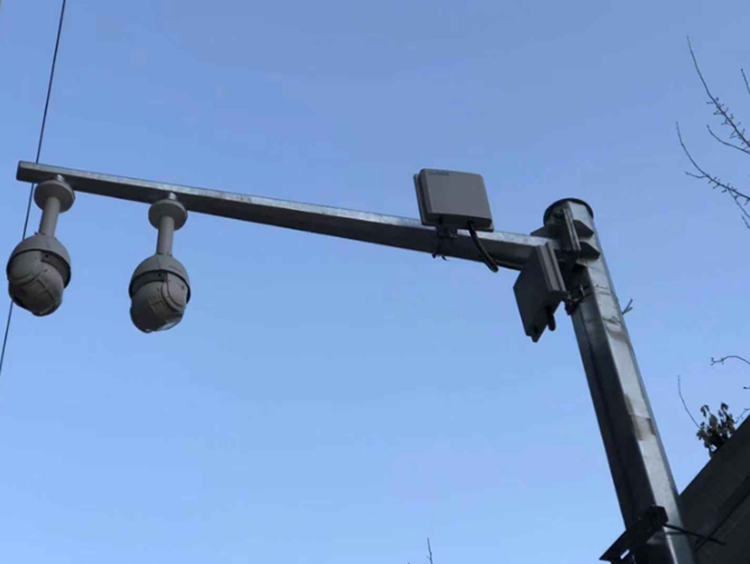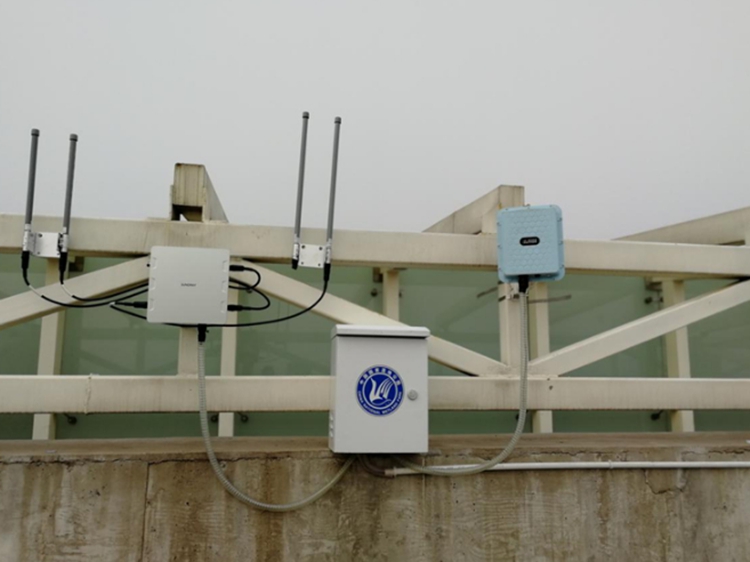With the development of wireless technology, wireless video surveillance is increasingly used in various fields. Among them, wireless bridges are widely used. Many users will ask how many cameras a Gigabit wireless bridge can carry. For this problem, we have to consider three factors: the bandwidth occupied by the camera, the transmission distance, and the transmission bandwidth of the wireless bridge. Let's take a closer look at the impact of these three factors.
First, the relationship between the number of bridges and the number of machines
As long as the relationship between the three is clarified, the selection and quantity planning of the wireless bridge and surveillance camera can be quickly determined in the wireless monitoring project.
The following is the calculation formula between the number of cameras and the transmission bandwidth of the wireless bridge:
Number of cameras = wireless bridge bandwidth / camera bit rate
Explain the bandwidth of the bridge inside, here is a little different from the switch, the bridge we usually buy is called the Gigabit bridge, his actual capacity is not 1000M divided by the code rate, which should consider a network Bridge real-time transmission bandwidth, 1000M bridge actual transmission bandwidth may be only about 100M, that is, only about 2 million pixels of the camera.

This is related to the transmission distance of the bridge and the performance, environment and interference of the bridge. How many cameras are connected to the bandwidth? Of course, the code stream can be connected in theory, but there will be no more. Explain the problem. Complex, but as long as you understand the working principle of WIFI is to know that the bandwidth of the bridge is not the main factor, time is very important, the more cameras, the shorter the communication time per camera, the entire period, the data just can not be completely processed in time is the upper limit So, once it can't be processed in time, the bridge will be unstable.
In fact, from another angle, suppose a bridge device, point-to-point bandwidth of thousands of meters, but when faced with multiple camera access points, this bandwidth is meaningless, the camera transmits data that is closely related to time, the bridge only It can be received one by one, and the unit bandwidth is no longer meaningful. The camera data is collected in real time, and the data elements that have been placed on the hard disk are sent and received. It's two different things. It won't be because of the large bandwidth. There is big data for you. The surveillance camera has no pre-reading mechanism and does not cache data for a long time. Therefore, when processing data slowly, there is a problem. When the time exceeds a certain time, it will cause a full delay. When the terminal abandons the old data and re-requests the new data, it will recover again, and then delay. The result is that the picture is stuck and the video content is lost.
Second, the transmission distance and bandwidth of the wireless bridge
The relationship between transmission distance and transmission bandwidth is well understood. The farther the transmission distance is, the smaller the transmission bandwidth is. After all, the wireless bridge is transmitted by microwave, and the microwave has a diffusion effect. When performing long-distance wireless transmission, the microwave signal is greatly weakened.
For example, a 5.8G high-power wireless bridge, its theoretical transmission rate is 300Mbps, but in practical applications, often 60Mbps. If a 5 km field test was conducted, a transmission rate of 60 Mpbs was obtained. Then, according to the above formula, a 5 km wireless transmission can carry 10 streams with a 4 Mbps 130 W camera.
However, this can only be achieved under theoretical conditions. After all, transmitting data and transmitting video are two different things. In the wireless video surveillance project, users pay great attention to monitoring the smoothness of the video. The 130W camera has a stream size of 4 Mbps, but in high-definition video transmission, the dynamic stream in the transmission bandwidth may suddenly rise to 8 Mbps or even higher.
Therefore, when the 5.8G wireless bridge performs 5 km wireless transmission, it usually only has 5 or 6 130W cameras.
Of course, it is also possible to increase the real-time transmission bandwidth of the wireless bridge by adding a high-gain antenna, so that one or two cameras can be added.
In addition, there are two current video coding standards: H.264 and H.265.
The new video encoding technology H.265 can highly efficiently compress high-definition video, which is nearly double that of H.264. Therefore, the camera using H.265 video compression technology can also reduce the transmission bandwidth. contribution.
Third, the performance of the wireless bridge
Different wireless bridge performance determines their application environment. For example, a 5.8G high-power wireless bridge can transmit 5 kilometers, while another wireless bridge can transmit 50 kilometers, and even a wireless bridge capable of transmitting 100 kilometers. .
The difference in transmission distance depends on the performance between them, and there are many factors that affect the performance between them, such as the microwave frequency, device power, hardware configuration, software, transmission technology, and so on.
Core Crusher
A core crusher is a term used to describe a workout or exercise
routine that specifically targets and strengthens the muscles of the core. The
core muscles include the abdominals, obliques, lower back, and the muscles that
support the spine and pelvis.
A core crusher workout typically consists of a variety of exercises
that engage these muscles, such as planks, crunches, Russian twists, bicycle
crunches, and leg raises. These exercises are often performed in a circuit or
interval format, with short rest periods between each exercise.
The goal of a core crusher workout is to improve core strength,
stability, and endurance. A strong core is important for overall functional
fitness, as it helps to support and stabilize the body during various movements
and activities.
In addition to traditional core exercises, a core crusher workout
may also incorporate other exercises that engage the core, such as squats,
lunges, and push-ups, as these movements require core activation for proper
form and stability.
Overall, a core crusher workout is an intense and challenging
routine that is designed to target and strengthen the core muscles for improved
functional fitness and overall strength.
Stone Crushing Hydraulic Cone Crusher,Cylinder Small Cone Crusher,Mining Hydraulic Cone Crusher
SiChuan TieYing Machinery Manufacturing CO.,LTD; , https://www.tieyingcrushers.com


